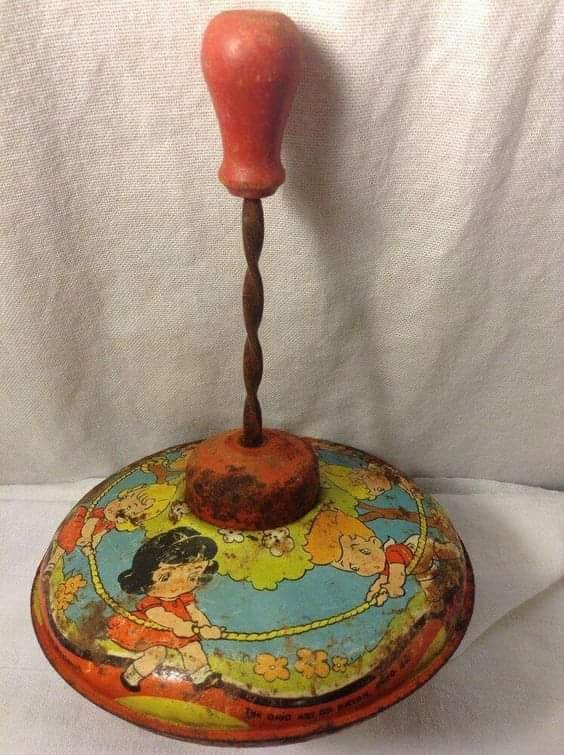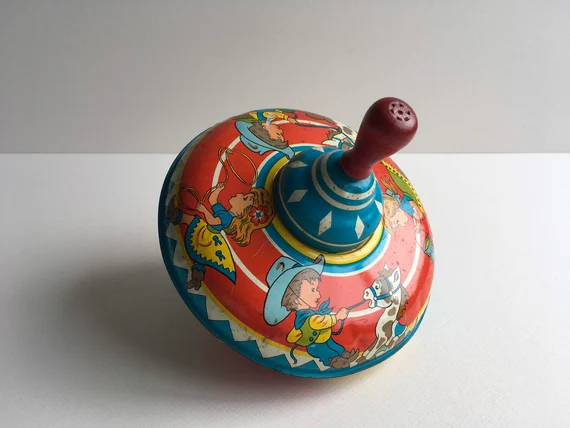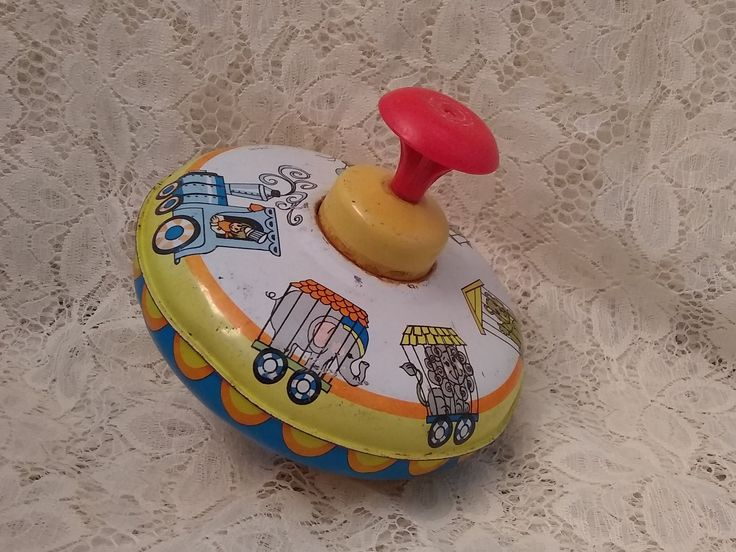Spinning tops are one of the oldest toys known to mankind. These simple yet mesmerizing toys have captivated people for thousands of years, transcending cultural boundaries and eras. Among the many varieties of spinning tops, the Vintage Ohio Art Spinning Top stands out as a beloved classic, renowned for its vibrant designs and nostalgic appeal. In this article, we’ll explore the fascinating history, uses, and cultural significance of spinning tops, focusing specifically on the iconic Ohio Art models that have delighted generations.
The Ancient Origins of Spinning Tops

Spinning tops hold a special place in human history, with their origins tracing back nearly 6,000 years. These toys developed independently across different cultures, making appearances in archaeological finds worldwide. For example, a clay top discovered in Iraq dates back to 3,500 BCE, while another wooden top was unearthed in the tomb of King Tut in Egypt, dating to around 1300 BCE. In China, spinning tops have been found in relics from as early as 1250 BCE.
Despite the vast differences in culture and geography, spinning tops have always been cherished for their simplicity and entertainment value. Their basic mechanism—spinning on a central axis—demonstrates the wonders of balance and motion, which continue to enchant both children and adults.
The Evolution of Spinning Tops Across Cultures
Spinning tops didn’t just evolve as mere toys; they also served other purposes in various cultures. Ancient people used them as ritualistic objects, gifts to honor deities, and even as tools for divination and prophecy. In some traditions, spinning tops were buried alongside the deceased as companions for the afterlife. As societies progressed, the tops began to play roles in organized games and competitions, where the duration and precision of a spin determined the victor.
For instance, the Malaysian Gasing top is still part of traditional games, where competitors try to spin their tops the longest or knock opponents’ tops out of a ring. Similarly, the Japanese Koma tops, often used during New Year celebrations, are spun with string and played competitively in teams.
Ohio Art Spinning Tops: An American Icon
The Ohio Art Company, founded in 1908, is best known for its classic toys, including the renowned Etch A Sketch. However, its spinning tops have also captured the hearts of children and collectors alike. During the mid-20th century, Ohio Art produced a variety of metal spinning tops, featuring colorful designs that ranged from whimsical illustrations to popular cartoon characters of the time.
These tops were typically operated by a hand-pump mechanism, creating a lively hum as they spun rapidly across the floor. The vibrant colors and charming graphics made them an instant hit among children and a staple in many households. Today, vintage Ohio Art spinning tops are highly sought after by collectors, symbolizing an era of simple yet delightful playtime.
Types of Spinning Tops and How They Work

Spinning tops come in various forms, each with a unique spinning method:
- Finger Twirlers: These tops are spun using a flick of the fingers. They’re small, simple, and often made from wood or plastic.
- String-Pulled Tops: These tops, like the Japanese Koma, require a string to be wrapped around the top’s body, then yanked to create a spinning motion. The string’s pull generates enough force to keep the top spinning for an extended period.
- Whip Tops: These tops are spun by hitting them with a whip-like string. The whip action keeps the top in motion, making them popular in traditional games across many cultures.
- Auger and Magnetic Tops: These modern innovations include tops that use auger mechanisms or magnetic fields to enhance stability and prolong spinning time.
- Vintage Metal Tops: Among the most iconic are the metal tops from Ohio Art, which use a hand-pump plunger. This plunger increases the spinning speed, creating a distinctive sound and making the toy’s colorful design blur beautifully.
Regardless of the type, the physics behind all spinning tops remains consistent: they balance on a single point, defying gravity until friction and air resistance slow them down.
The Appeal of Modern and Handmade Spinning Tops
In today’s digital age, the simplicity of spinning tops provides a nostalgic escape from screens and gadgets. Many modern tops are still handcrafted, often turned on a lathe from wood or made from metal, glass, or plastic. Some designs feature intricate patterns or are made from premium materials, appealing to both toy enthusiasts and collectors.
Renowned designers like Charles and Ray Eames even celebrated spinning tops in their short film Tops (1969), showcasing the diversity and beauty of tops from around the world. The film captures the playful spirit of spinning tops while demonstrating that everyday objects can spin like tops, blurring the line between art and play.
Why Collect Vintage Ohio Art Spinning Tops?

Collecting vintage Ohio Art spinning tops isn’t just a hobby; it’s a journey into the past. These tops represent a simpler time when toys were durable, imaginative, and fueled by a child’s curiosity rather than a battery. Collectors are often drawn to the tops’ retro designs, nostalgic themes, and the craftsmanship that went into their production. They also serve as tangible memories of childhood, passed down from one generation to the next.
Vintage tops often fetch good prices in the collectibles market, especially if they’re in good condition. Some tops still have their original packaging, adding to their appeal and value. Beyond their monetary worth, these spinning tops are reminders of an era where imagination and simple pleasures reigned supreme.
Conclusion: The Timeless Spin of Joy
The Vintage Ohio Art Spinning Top is more than just a toy—it’s a timeless symbol of childhood wonder, cultural heritage, and the enduring appeal of simple playthings. From ancient clay tops in Iraq to handcrafted wooden tops in Japan, spinning tops have transcended time and geography, captivating hearts for centuries. Whether you’re a collector, a toy enthusiast, or simply someone seeking a dash of nostalgia, these classic tops offer a joyful spin back to simpler times.
Are you ready to rediscover the magic of spinning tops? Try spinning one today and let it transport you to a world of whimsy and wonder.


